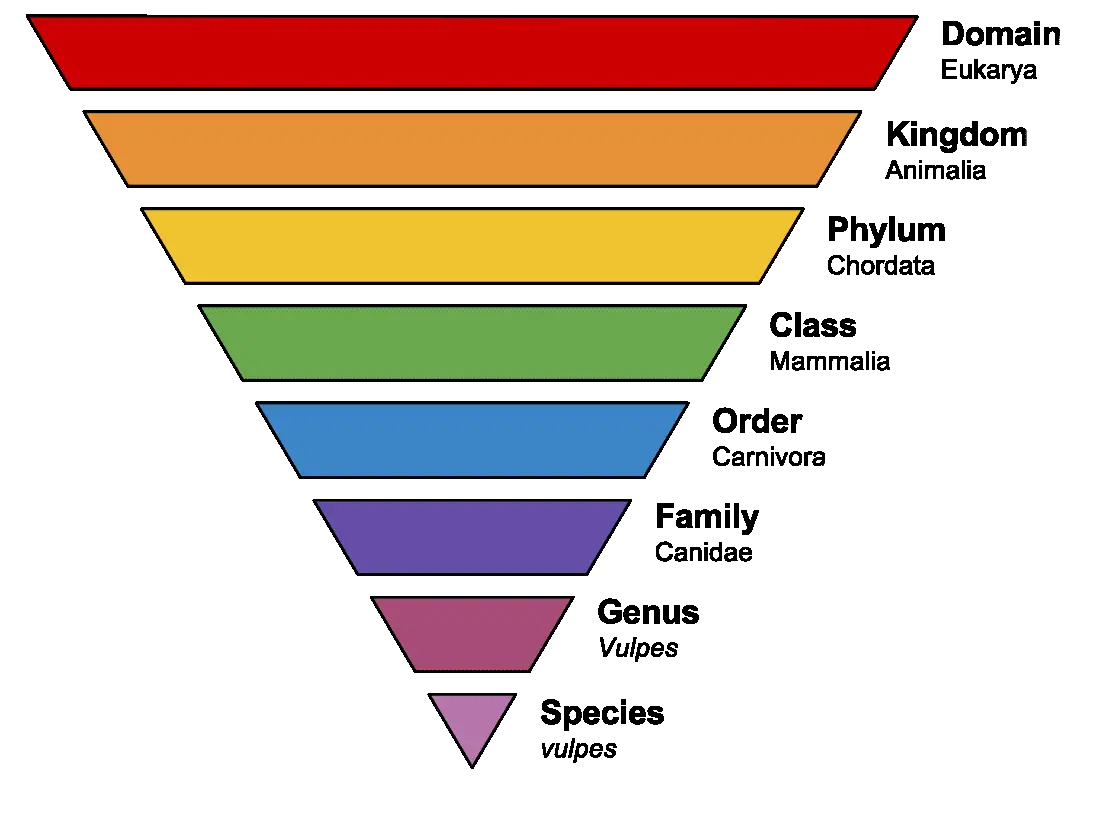Biology is a massive subject, and if you’re trying to study for a test, remembering all those facts, strange Latin names, and confusing concepts can seem impossible. The smartest students, however, have found clever ways to increase the amount of information they remember. One of the best ways is using a biology poem to help remember the difficult material.
A bio poem is a mnemonic device or a simple poem that includes the facts, names, or concepts you’re trying to remember. The idea is that your brain retains the information better that way, and when it comes down to test day, you’ll be able to call forth the learned material by reciting the poem.
Below, we’ve listed seven bio poems that will help you perform better on your next exam. Plus, keep reading for the ultimate guide on remembering difficult things and studying for big exams.
How We Chose Our Ratings

You can see below that we’ve rated the poems we’ve included in this roundup; since we’ve scoured available bio poems, we’ve been able to bring you only the best and most helpful.
Top 7 Best Bio Poems
1
Best Classic Biology Poem: Dear King Philip
5 out of 5 stars
A mnemonic device is a great way to help our brains remember complicated groups of information–especially when the data has to go in a specific order. The Dear King Philip device has been used for generations to help students remember the order of taxa in biology.

The order is as follows: Domain, Kingdom, Phylum, Class, Order, Family, Genus, Species.
Each of the mnemonic’s first words matches the words of the taxa, in order: Dear King Philip Came Over For Good Spaghetti.
It sounds ridiculous and hilarious, but that’s exactly why it works so well; because it involves our emotional response (laughter and hilarity), we’re more likely to remember it! Other variations include the following:
- Dumb Kids Prefer Cheese Over Fried Green Spinach
- Do Kings Play Chess On Fine Green Silk?
- Dakota Kills People Cause Other Friends Got Sad
The following two classic biology mnemonics don’t include the letter D, so if your biology professor doesn’t ask for you to remember Domain, these will work better for you:
- Keep Pond Clean Or Fish Get Sick
- Kids Pick Candy Over Fancy Green Salad
You can also make up your own.
With or without the Domain, a taxon is a group of organisms. Taxonomists use these groups to organize what we know about animals. African elephants, for example, form the genus Loxodonta. While scientists largely agree on where African elephants belong, they often disagree about other classifications, a fact that isn’t widely known!
2
Best Basic Bio Poem: MRS GREN
5 out of 5 stars
Mnemonics can help us remember extremely simple things (the difference between dessert and desert, for example, is the extra s, which gives you a clue about its meaning. Don’t you want to eat more dessert?) but they can also help you outline more complicated concepts.
Biology teaches us that seven processes define living things, and once again we turn to a mnemonic to help us remember that process: MRS GREN.
The letters stand for the following:
- M → Movement
- R → Respiration
- S → Sensation
- G → Growth
- R → Reproduction
- E → Excretion
- N → Nutrition
Movement is a vital process for living things as it allows them to find or better position themselves to attract or produce food.
Respiration is the process through which living things convert energy from carbohydrates and fats. Most of the organisms we’re familiar with use oxygen to break down (this produces a by-product know as carbon dioxide), but some organisms utilize nitrates, iron, or other material to break the sugars down.
Sensitivity is connected to movement and, in fact, is what triggers movement for many organisms. An organism is a living organism if it can react to changes in its environment. A plant, for example, will move its leaves towards the sun or towards a grow light.
Just like sensitivity and movement are connected in this bio poem, so growth and respiration are connected. In fact, it is respiration that allows for growth!
The excess energy organisms create when they break down sugars during respiration can be used in the production of new cells–whether that’s a larger shell (as in the case of a snail) or a new leaf (as in the case of a plant). Special note: for growth to be considered, it must be irreversible.
Reproduction is the fifth of the living processes that define whether or not something is alive. It can range from the ultra-simple division of cells to the conception of new human life!
We’ve already referenced one by-product that occurs during normal function in a living cell–carbon dioxide. Carbon dioxide is excreted and is an example of the sixth living process: excretion. A living simple creates waste as it functions normally, and this waste must be excreted.
Nutrition is the taking in of food. That food can vary wildly and can be anything from water in the soil to other organisms. Regardless, nutrition is a vital part of the living process.
3
Best Bio Poem for Phases of Mitosis: I Passed My Anatomy Test
5 out of 5 stars

Another great bio poem that lends itself to helping us remembering the phases of mitosis is this one: I Passed My Anatomy Test. The letters (I, P, M, A, and T), stand for the following phases:
- Prophase
- Metaphase
- Anaphase
- Telophase
If your professor requires you to learn about cytokinesis, as well (this phase begins during anaphase or telophase), you can add the word “calmly” onto your bio poem so that it reads: I Passed My Anatomy Test Calmly.
Other possible devices for the phases of mitosis include the following:
- I Propose Men Are Toads
- Idiot, Pass Me Another Tequila
- I Picked My Apples Today
Which device should you select? Choose the one that makes you laugh, smile, or that sticks in your head readily. The easier it is for you to remember, the better!
4
Best Bio Poem for Embryonic Development: Zikes!
5 out of 5 stars
There are four stages of embryonic development:
- Zygote, in which the fertilized ovum (the united sperm and egg cells) begins to divide rapidly
- Morula, which is comprised of 10-30 cells
- Blastula, which gets its names from the Greek word for “sprout,” and in which the morula forms an inner cavity filled with fluid, forming a blastula
- Gastrulation is the embryonic phase in which the blastula (single-layered) turns into the gastrula (three-layered)
- Neurula, in which the nervous system becomes to develop
The first letters of each of these stages correspond to the following mnemonic: Zikes! Martin is a Big Giant Nerd! (Note that “is” and “a” aren’t counted!)
5
Best Bio Poem for Taxonomy of Humans: All Cool Men
5 out of 5 stars
A common question that likes to pop up on biology tests is about the taxonomy of humans, and these clever devices help us remember the right order.
First, here’s the taxonomy: Animalia, Chordata, Mammalia, Primate, Hominidae, Homo sapien.
Now, here’s the mnemonic: All Cool Men Prefer Having Heavy Sideburns.
6
Best Bio Poem for Kingdoms of Life: Biology People
5 out of 5 stars
If you’re confident the kingdoms of life will show up on your biology exam soon, here’s a great bio poem to help you remember the five kingdoms: Biology People Find Plants Attractive.
It will help you remember these five kingdoms:
- Bacteria (monera)
- Protista
- Fungi
- Plantae
- Animalia
7
Best Bio Poem for Major Fungal Classes: Zombies
5 out of 5 stars
Another hilarious mnemonic device–Zombies Are Brown and Dirty–is one of several that can help you recall the major fungal classes!
The classes are:
- Zygomycetes
- Basidiomycetes
- Deuteromycetes
- Ascomycetes
In addition to Zombies Are Brown and Dirty, you can use:
- Zap A Bear Dead
- Zebras Are Big Dummies
- All Zebras Dance Badly
Using Poetry to Help You Remember Things

Memory is a fascinating process and understanding how it works can help you better study for your next exam–with or without a bio poem!
The first step in remembering is called encoding. Encoding is the process through which something external–an interaction with another person, a biology concept, or the route to a new place, for example–is converted into a construct. A construct is stored inside the brain and if it’s laid down correctly, can be played later, like a movie.
Encoding a Memory
Encoding begins when we pay attention to something, and our interest in the subject matters hugely, as does emotion. This is why, for example, it’s so easy to remember the lyrics from a favorite song. Music can evoke emotion, and because we like the genre, we’re paying close attention.
However, you probably have trouble remembering the name on the nametag of the person who checked out your groceries this morning–because you weren’t very interested and because no emotions were called for.
This is why poetry is so helpful. By translating obtuse concepts into funny, interesting rhymes (even if you don’t think the rhyme is interesting; the new combination of words that rhyme is read as unusual and worth paying attention to by your brain) help you recall complex or boring material at a later time.
Two More Powerful Memory Devices
Using bio poems, however, isn’t the only way to remember complicated information. There is a whole host of available memory devices that can improve your ability to retain and recall reams of data. Here are just a few:
1. Method of Loci
“Loci” means “places” in Latin and the method of loci is often called the memory journey or the memory palace in today’s world. This memory device has been around since the time of the ancient Romans and Greeks (Cicero, for example, wrote about it in his De Oratore). It’s used today by champion memorizers and sometimes even shows up in pop culture (in the hit television show Sherlock, for example).
To use the method of loci, visualize the physical layout of a place that’s familiar to you–your bedroom, for example. Then, assign a concept or term to the different objects in your bedroom. Here is an example of how you might assign parts of a cell:
- Doorway → lysosome
- Carpet → nucleus
- Nightstand → nucleolus
- Lamp → microtubules
- Water bottle → cytoplasm
- Clock → Golgi apparatus
- Bed frame → mitochondrion
- Mattress → Golgi vesicles
- Pillow → rough endoplasmic reticulum
- Bedspread/comforter → smooth endoplasmic reticulum
- Curtains → cell membrane
- Poster → centrioles
- Trophy → pinocytotic vesicle
You can assign more than just the name to each place in your bedroom; you can also assign the function of each part of the cell.
This way, when you get to a test question that asks you to name the parts of a cell and their functions, you can mentally “walk” through your room, and each object in your room will help trigger your recall so you can answer the test question.
2. Chunking & Organizing
Chunking is a method of memory recall best explained by two popular examples: telephone numbers and social security numbers.
Telephone numbers have as many as eleven numbers, and social security numbers have nine; a string of eleven numbers or nine numbers would be difficult to memorize, but by organizing the strings into smaller chunks of numbers, they’re accessible to even small children!
This is a great device to use when you’re dealing with long strings of information because you’ll be able to focus on smaller groups instead of larger pieces of data, which have the added issue of being overwhelming!
Your Best Exam Yet
Thanks to the seven bio poems and two memory devices we shared above, you’re all set for your best exam yet. Good luck!

